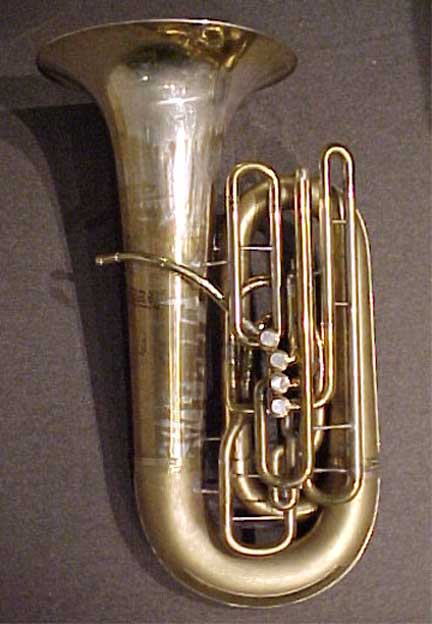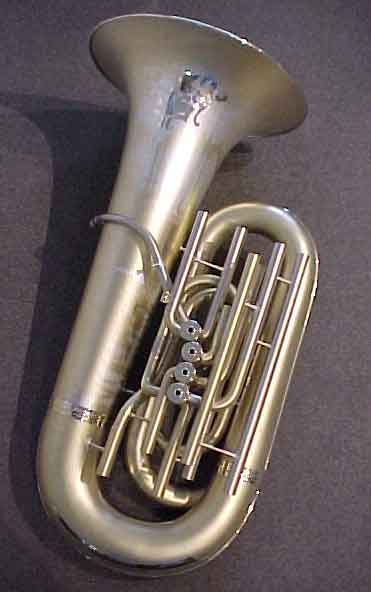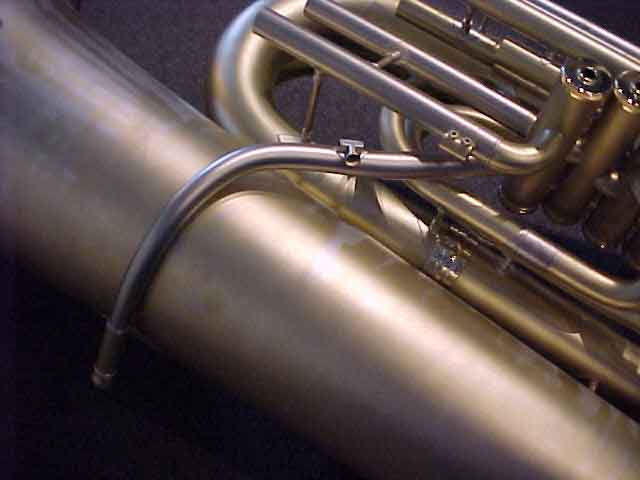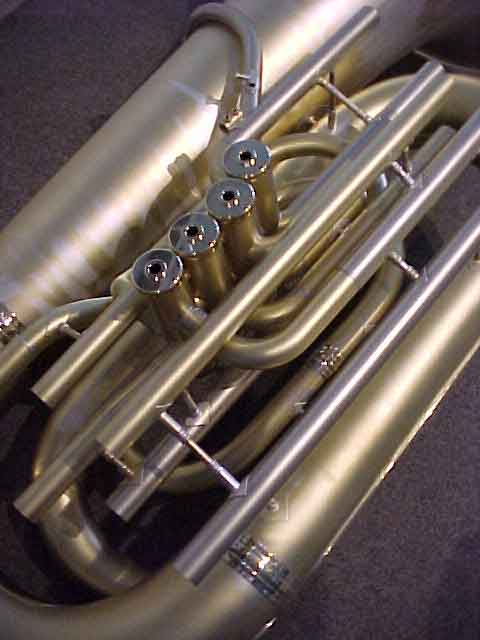
P.S. In one of my torch-and-hacksaw mindsets, I nearly attempted the procedure myself but decided that I would merely wind up ruining xx,xxx worth of horns and generate a lot more work for Lee S.





Nah, I wouldn't waste my money on an overpriced, buffed to death refurb. I would rather find an old ugly one cheap and then go to town on it. I do miss the one I had, but being a 6/4, top action, bell front, BBb, it really was a one trick pony. With an upright bell pointing to the the "correct" side, I could see a lot more uses for it.The Big Ben wrote:Sooooo.... That one got yer mouth a-droolin', eh?
I'm gonna hafta try one of those American bigboys- my teacher has a 20J.
If you love that Martin sound, it could be a worthy project to put an upgraded valveset onboard.

I have watched that project progress, and it is a true work of art. However, the donor Martin was a top action. I am wondering if a front action would be any easier??harold wrote:Here's what they look like:
http://www.oberloh.com/martintuba/martintuba.htm
According to Dan, the job is a lot more complex than it first appears. If it is a cool horn, I probably wouldn't do it myself.
Having owned one, I think I would want to go with the slightly larger bore of the Meinl valveset if I was going to go through all that trouble. I am also concerned that a rotor added to the stock tight Martin bore would make the horn just a little stuffy.Bob1062 wrote:Marty, (if you can find one that's already front action) have you considered adding a rotary 4th valve?



Art is not blowing smoke. My own way of working around this issue is to make replacement branches of the ideal radius and corrected length. I typically remake the No. 6 branch and dog-leg to the master tuning slide; this compensates for the length lost in the reconfiguration of the valve section and mouth-pipe. It is a serious amount of work. Assembling the valve section is a lengthy process as well, it takes a good deal of thought and reasoning before one starts chopping up tubes. You need to figure the layout and how it relates to the existing body. If the job is done with care, it can look darn near factory. The images below are of a 1930s York that I was working on until recently. The first image is what I started with. The second image was taken in a rough state(configuration not completed), during the time I was making corrections to the pitch. The first No. 6 branch I made was short so I put a tunable ''pig tail'' between the 4th valve and the master tuning slide. Though it played just fine, I did not like the look at all and thought the overall balance of the horn not to my liking. I eliminated the "pt", redesigned the 6th branch and then made a second one and that made all the difference. When the 6th branch was redesigned, I made the second and final mouth-pipe assembly (nickel-silver) to adjust the centering. The block I used here is for a new .750 bore MW 2165,. In addition to the 6th branch mouth-pipe and dog-leg, I made the slides, 4th valve branches and 1930s "York style" braces. I chose not use MW slide and braces primarily because there 3rd and 4th slides are way to broad and did not fit the profile/ outline of the tuba. I wanted the valves to be properly centered and did not want the slides hanging out over the side of the top bow. I made as many duplicate York style braces as needed (lots) because the owner wants his horn to look like a York, not "franken tuba". After the the pitch, balance and look were squared away, I took it all apart again, addressed the damage inflicted during the process and reassembled it one more time to make sure it was straight and square with itself and looked the way it should "Factory". I will post an image of the horn as it looked prior to plate as soon as I can.Art Hovey wrote:Something to watch out for when converting a top-action tuba to front-action: Many top-action tubas have rather small inner bows, i.e the first and second curved pieces of conical tubing coming out of the valve set. .


So you can see, there is a lot more to doing such a project then purchasing an existing valve set and slapping it on. A Martin is even more difficult, if you want it to look every bit as good as it plays.Harold wrote:There are no slam dunks when attempting this type of work, but don't take my word for it. .


And I believe that Marty was wondering about putting a new 4 valve set on a front action Martin. The very real problems Art, Dan, Harold and others refer to regarding converting a toploader to frontloader are known.MikeMason wrote:Just reporting what Albert told me.My instructions to him were"make this horn into a good playing 4 valve".This was not art like you do to horns.


I stand corrected.bloke wrote:As I recall, the medium-bore front-action Martin 6/4 B.A.T.'s have a remarkably fast taper in the bore between the valve block and the small side of the main slide. The small side of the main slide is quite large and the large side is huge.cjk wrote:The bore of the valves on those old Martins is kinda small, like .715 or .710. I'd measure carefully where the bugle starts past the main tuning slide. It may need to have some trimmed off of it to make it big enough to accept the larger valve set.





